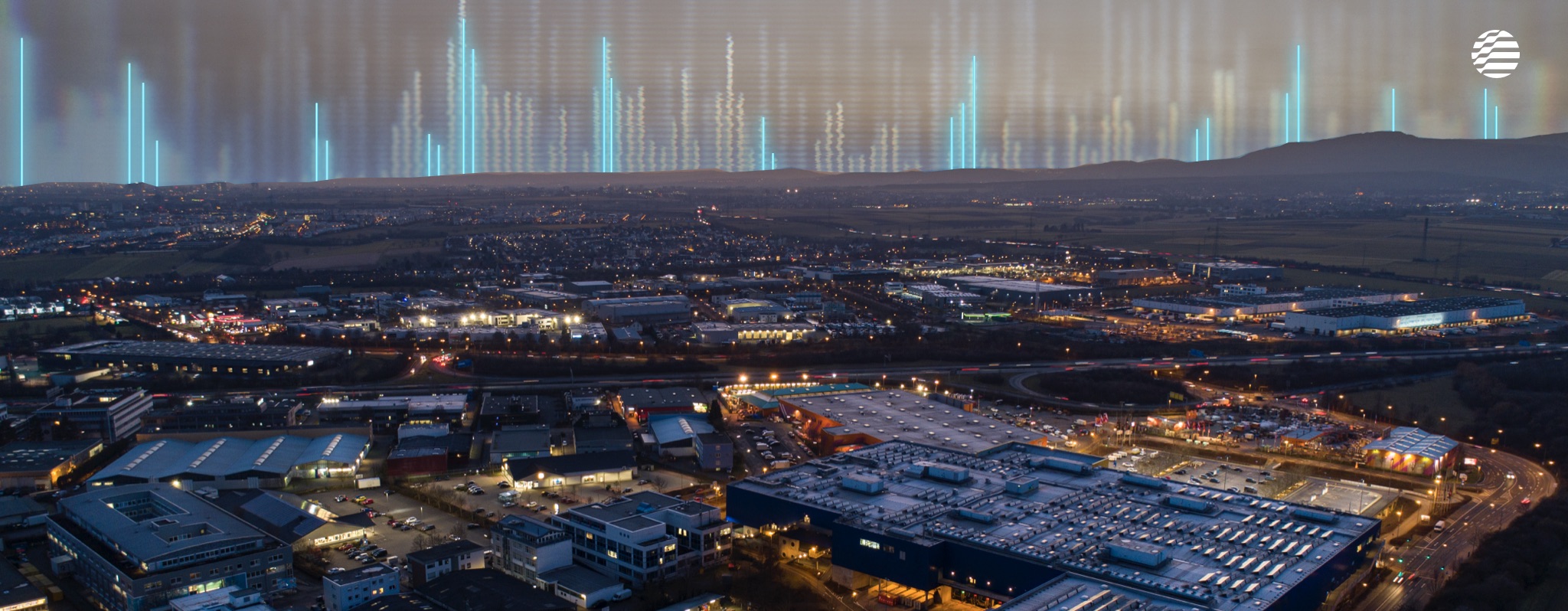
Does your commercial or industrial plant track downtime and other essential data from its machines? If so, you’re part of the more than three-quarters of businesses that do so.1 But if power quality (PQ) analysis isn’t part of that routine, your efforts to minimize system disruptions are likely more reactive than proactive — and the financial risk of not planning ahead could be substantial.
- $39,000: Hourly downtime cost for fast-moving consumer goods facilities1
- > $2 million: Hourly downtime cost for automotive facilities1
- $129 million: Annual downtime cost per Fortune Global 500 facility1
Plant managers can get ahead of equipment downtime, production delays and other facility issues by monitoring the PQ running through their systems. Doing so can help prevent costly disruptions and even extend the lifespan of equipment.
How do you monitor power quality?
Solving PQ problems starts with finding and identifying the issues in the first place. That means you need visibility into the health of your machines’ electrical power.
The first step is installing ultra-precise power analyzers into your equipment. These monitoring devices continuously measure, identify and record vital PQ data — which you can then leverage to get ahead of and control issues. Simply plug in and begin collecting data.
Next is deciphering the PQ information provided. While monitoring devices can help you instantly identify the source of power issues and alert to changing conditions, sometimes it’s best to leverage PQ expertise. Remove any and all complexity assessing power quality issues with expert help, like that found at Powerside.
Ultimately, anyone monitoring power measurements will want to pay special attention to a select few:
1. Power factor
Power factor is a metric used to express how efficiently power is used. Commercial and industrial facilities with inductive loads often experience low power factor due to the increase in reactive and apparent power, leading to:
- Increased demand charges
- Utility penalties
- Higher energy costs
How to measure: Install monitoring devices at key points in your electric power system to measure voltage and current (e.g. generator outputs, transformer connections, and locations with large, intermittent or unpredictable loads). These monitoring devices use the measurements to calculate active, reactive, and apparent power, as well as power factor. Advanced devices can record this data over time and produce regular reports.
2. Harmonic distortion
Harmonics are multiples of the supply frequency caused by non-linear loads such as power converters, AC equipment, variable speed motor drives (VSDs) used with industrial pumps and more. Their presence can alter signals (AKA harmonic distortion) and lead to:
- Reduced power factor
- Equipment degradation
- Less usable power
- Core motor loss
- Damaged power systems
Further, because large industrial converters and VSDs can generate significant harmonic distortion at the point of common coupling (PCC), other users connected to the grid are negatively impacted. This often leads to costly penalties on utility bills.
How to measure: Look for Total Harmonic Distortion (THD) levels for both voltage and current on the data collected from your power analyzer, and ensure they comply with industry standards such as IEEE 519.
For an in-depth example, explore this case study of how a megafarm using several hundred electronically commuted motors (ECMs) lowered their harmonic distortion through power quality analysis.
3. Voltage imbalance
Voltage imbalance occurs when the voltage magnitudes in a three-phase system are not equal. Causes may include improper distribution of single phase loads or large single phase equipment.
Voltage imbalance leads to overheating and reduced efficiency in motors, causing them to draw excessive current and potentially fail.
How to measure: Install power quality analyzers that can monitor the voltage levels of each phase. Compare the readings to identify any imbalance, typically measured as a percentage.
4. Voltage sags, swells and spikes
Voltage sags (dips) and swells (temporary over-voltages) are common power quality issues that can significantly impact sensitive industrial equipment. These fluctuations can cause machinery to malfunction, leading to equipment damage or failure and delays in output.
Similar but shorter in duration than voltage swells, transients — or spikes — are brief, high-frequency bursts of energy caused by events like switching operations or lightning strikes. These abrupt voltage disruptions can be highly destructive to electronic components and sensitive equipment found in commercial and industrial environments.
How to measure: Because voltage events can happen in milliseconds, it’s important to use power analyzers capable of recording high-speed, high-magnitude waveforms over time. Having visibility into the exact timestamp, duration and magnitude of events is crucial when reviewing the recorded data for patterns or recurring issues.
Once voltage trends are identified, appropriate correction solutions can be installed. Check out this article for additional details on how voltage sag can be mitigated in facilities with large current inrush.
Prevent power quality issues before they impact plant performance
Collecting and analyzing the power quality of your machines — using analyzers like the PQube® 3 and PQ Edge® — provides invaluable insights that can be leveraged for preventive maintenance.
While there are many instruments on the market that measure PQ at individual points of power consumption, the true edge is understanding your operation’s power quality as a whole. Enterprise-wide analysis — like that found in QubeScan, our intelligent, secure cloud platform — allows for even deeper insights to stay on top of facility electrical health and avoid business impacts.
C&I plants can’t afford the disruption caused by poor power quality. Get ahead of maintenance, improve efficiency and avoid costly downtime with systemwide PQ monitoring and analysis. Talk to us about your plant’s specific power issues today.
1 Siemens Industry Inc., The True Cost of Downtime 2022, published 2023.